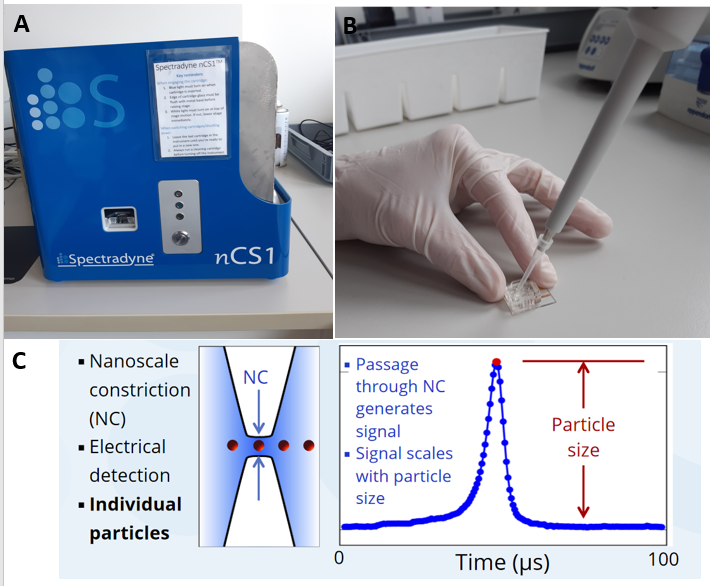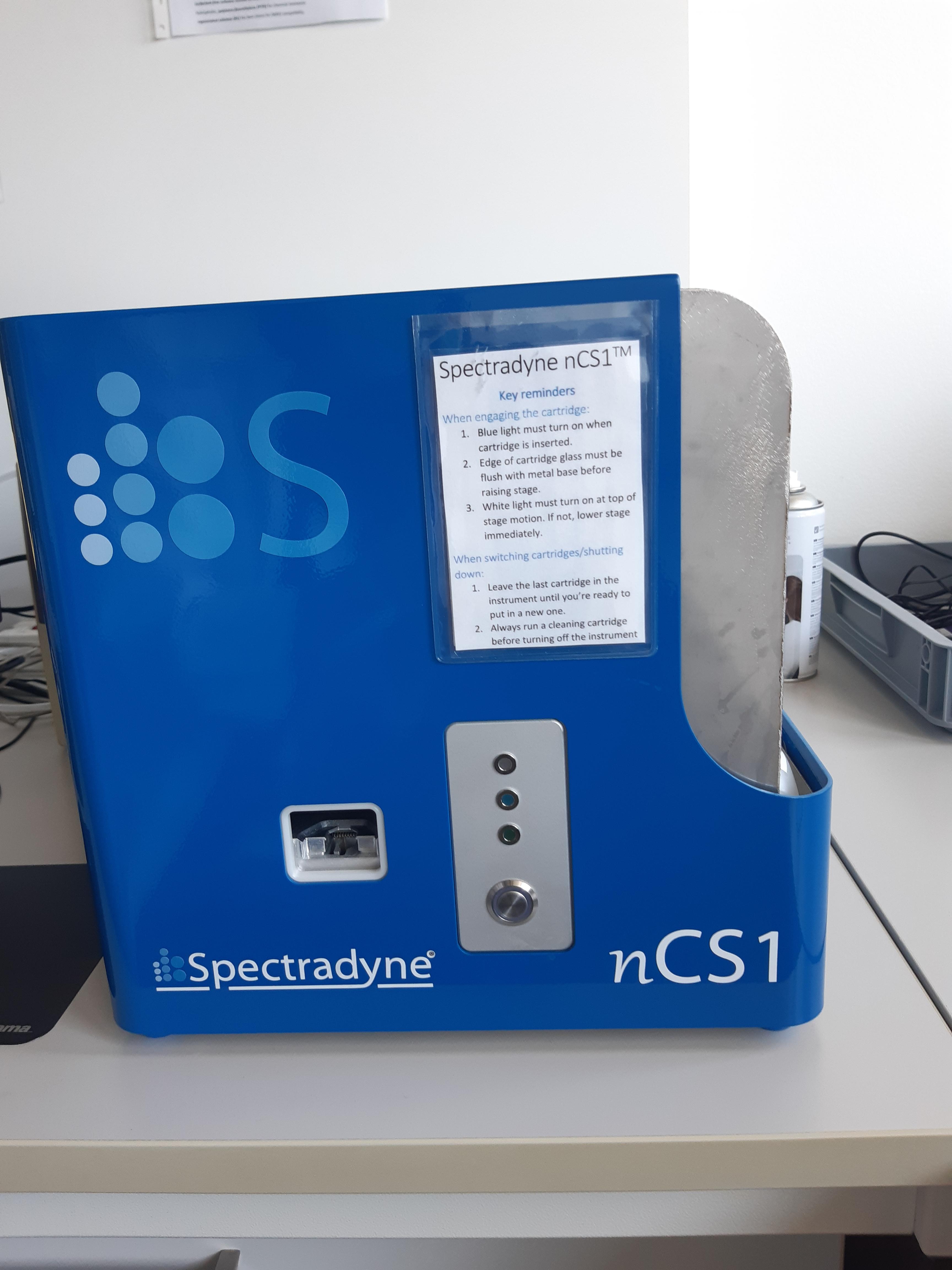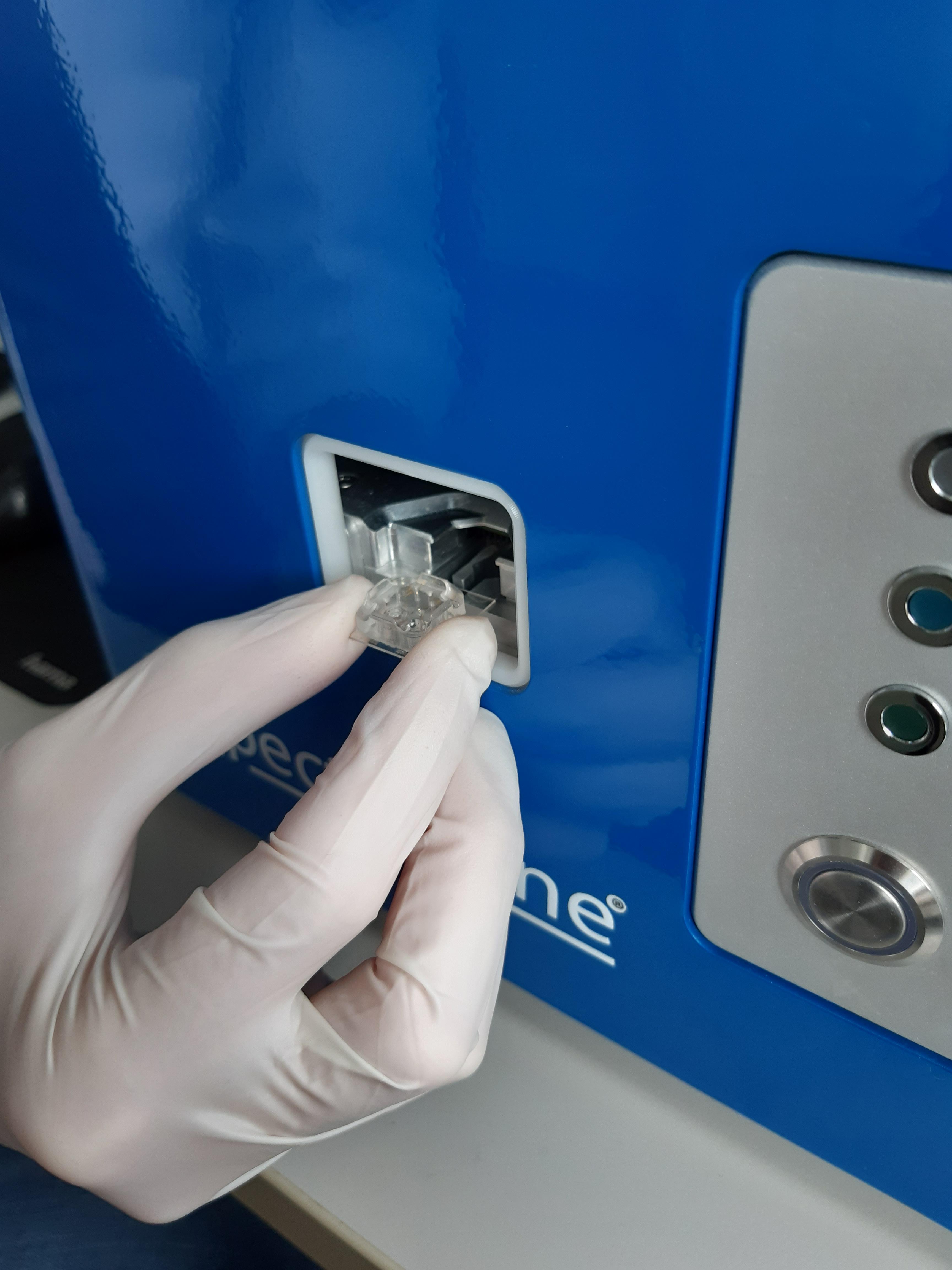Spectradyne's nCS1™ instrument [A] characterizes nanoparticles using electrical sensing (Microfluidic Resistive Pulse Sensing) to measure the diameter of each particle as it passes through a nanoconstriction, providing real-time sizing and concentration information.

The heart of the technology is the microfluidic cartridge [B], which allows the electrical detection of nanoparticles as they pass one by one through a nanoconstriction. Only 3 µL of analyte is required for analysis using a disposable microfluidic cartridge, which prevents contamination between measurements and eliminates cleaning requirements. Particles in fluid pass through a nanoscale constriction (NC) [C] as shown on left side. A voltage drop is applied continuously across the two sides of the NC. As particles pass through the NC, the output signal changes in proportion to the volume of the particle. Particles are measured individually, with no dependence on particle material. Accurate concentration and size distribution of any type of nanoparticle, from the biological to the industrial.
| Spectradyne nCS1 Specifications | |
|---|---|
| Technology | Microfluidic Resistive Pulse Sensing (MRPS) |
| Acceptable particle types | All materials (e.g. transparent/opaque, conducting/insulating, etc.) |
| Particle Size Range | 400nm to 2000nm |
| Sizing/Concentration Precision | Sizing <±3%, Concentration <±10% (particles/ml) |
| Measurable Concentration Range | 105 to 1012 particles/ml (sample dependent) |
| Sample Size Required | 3 µL |
| Maximum Particle Detection Rate | ≈ 10000 particles/sec (sample dependent) |
| Instrument Control Interface | USB to Windows computer |
| Data Analysis Software | Proprietary signal extraction method, real-time signal display, real-time concentration display, multiple filtering methods, multi-dimensional data display, PDF report export |
| Physical Characteristics | 13" W × 15" L (33 cm W × 38 cm L) |
| Electrical | Standard 120/220V, 50/60 Hz AC |
https://nanoparticleanalyzer.com
https://nanoparticleanalyzer.com/blog032721.php#mar272021
-
Quickly and accurately quantification extracellular vesicles
-
Directly measure the concentration (particle/mL) of lipid nanoparticles and liposomal formulations
-
Measure the absolute concentration of virus in minutes
-
Detect formulation instabilities dramatically faster (for example protein aggregates)


